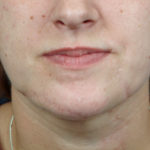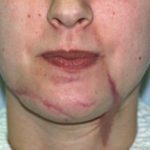Scar revision is a common request and a frequently performed procedure in plastic surgery. Whether it is scars from an accident from a surgical encounter, many patients have concerns about their scars. As a result, there is much interest in scar improvement whether it is immediately after the scar event has occurred or even years later. The sheer number of over-the-counter scar treatments attest to the public’s interest in eradicating these unsightly and disfiguring marks.
As a general rule, there are no specific scar creams or ointments that will make any significant improvement in an established scar. Topical scar treatments do have a role to play in early scars but not in older scars. Only the concept of some form of scar revision has any hope of improvement at this point. Scar revision can consist of a variety of treatments including excision and rearrangement (cutting out and reclosing), laser therapies, and mechanical methods of dermbrasion or sanding. All are not equal, meaning that each has a specific role to play and can be beneficial if used in the right kind of scar.

Secondly, there is no single method of scar revision that will work for all scars. Much ballyhoo goes on about the use of lasers, but quite frankly, lasers are not the most common method of treating scars. They may seem like an ‘eraser’ but their use is restricted to treating early or persistent redness of scars and some light skin resurfacing of scars. Both of these laser effects produce mild degrees of improvement but it is not effective for many types sof scar problems. By far, excision and primary closure (cutting the scar out and reclosing it) or excision and tissue rearrangement (cutting the scar out and realigning it through geometric rearrangements such as z- or w-plasties) is most common. Scar excision is probably the most effective method of scar improvement, if the scar problem permits, as it is removing the scar first and creating a fresh wound. Dermabrasion and deeper laser resurfacing may be helpful for wide scars that are raised that do not lend themselves to excision.
Lastly, scar revision, no matter what method is used, takes time. I tell patients that scar revision is a process that usually involves takes a step back (to allow healing) in the hope that in the long term you have jumped two steps forward and it looks better. It requires a commitment of time and a leap of faith that the ‘effort’ will be worth the result.
Dr. Barry Eppley
Indianapolis, Indiana



